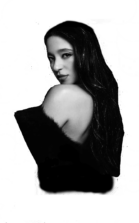

With the success of the first season of “The Umbrella Academy” in February 2019, Netflix released a second season on July 31. Inspired by the Dark Horse Comics series, originally released in 2007, the unusual show connects a strange web of family dysfunction and world saving with humor. Despite being a show about superheroes, “The Umbrella Academy” is vastly different from the movies that we now expect from Marvel and DC, as it focuses mainly on the downsides of being a superhero, and rarely, if ever, the upsides. This angle makes it far more interesting, even if somewhat depressing at times, in view of the lengths the characters have to fall when they do fail.
The first season begins with Sir Reginald Hargreeves, played by Colm Feore, adopting seven children, all born on the same day, from 43 different mothers. He creates the Umbrella Academy, a place for them to learn to control their powers. They become a family, but far from a usual family in many aspects, not the least being that they possess powers. He also refers to them by numbers — Number One, Number Two, etc. — highlighting how he sees the children more as tools or weapons than actual people. There are many more weird aspects of the show, including Pogo, played by Adam Godley, a genius chimpanzee who assists the Academy as well as killers connected to an apocalypse.
“This angle makes it far more interesting, even if somewhat depressing at times, in view of the lengths the characters have to fall when they do fail”
From flashbacks to the characters’ childhoods to time-traveling assassins, time is frequently manipulated in the show. The seven kids grow up to become adult narcissists and addicts, developing a number of conditions that would normally require intensive therapy. The actors do an incredible job of displaying the mental problems that many of the characters experience, especially addiction and how it affects their lives. Number Four, Klaus, becomes a drug addict and an alcoholic in an attempt to escape his powers and his family. Apart from developing addictions, he also starts a cult using knowledge from the present.
While the series of flashbacks dumping exposition becomes a tad boring, the balance is regained from the incredible music that plays over fight scenes, and occasionally the excitement of other fast-paced scenes. The soundtrack has interesting choices spanning a variety of decades and genres that are nearly always meshed well with the show’s events.
Throughout season one, the show explores family dysfunction, especially the grudges between siblings. As the show progresses, we gain deeper insight into how their lives and how each of them tried to forget their past in different ways. They do an incredible job of displaying the deep-seated grudges between themselves, but they still show love towards each other and help their adopted siblings.
Then, their adoptive father’s death brings them all back to their childhood home, the Umbrella Academy, where they must attempt to get over their differences to figure out why he died and how to avoid the apocalypse that Sir Reginald somehow saw coming. From the beginning to the end of season one, they struggle to put aside their differences. The theme of family dysfunction carries on into the second season.
While parts of the first season had tendencies to bore audiences with its backstory overkill, the second season almost never felt like a chore. It was packed with content and much more entertaining. The jokes became less cheesy, the theme darkened and the conflict got more meaningful.
In season two, many of the characters choose to put their superpowers behind them and pursue normal lives (or as normal as they can get). However, they find out that there is another apocalypse approaching, forcing them all to find some way to reconnect again to save the world. This season focuses less on the superpowers and the apocalypse, but more on the family dysfunction. They prove time and time again that they care for each other, but hate each other at the same time. They walk away from each other many times, only to come back when they’re most needed. This incredibly powerful theme is displayed through the first season, but even more so in the second season, following them through nearly the entire story.
Season two takes a deeper look into how their adoptive father’s abuse shaped each of the characters. Their father taught them that they would suffer severe consequences if they ever failed; this mindset lands them in lots of trouble, and makes them struggle with the fact that punishments and violence are not always the answer. A great example of this is when one of them decides to teach an aggressor a lesson but goes far overboard, even frightening their own companion in the process. Still, they do an incredible job of displaying the hurt hidden underneath their kind character.
Apart from this, they were often shielded from the problems that their powers caused, as their father highlighted the good parts of their powers and concealed the downsides. The siblings are forced to learn the consequences of their actions, and how they can’t just use it for everything to achieve whatever they want all the time. These consequences lead to much of the season consisting of the siblings’ attempts to forgive themselves and the people around them.
While the highlight of the show may have been the incredible acting, the visual effects in the background of both seasons, especially season two, are also exceptional. They manage to make the powers fit in perfectly in a normal world, despite most of them being incredibly out of place. The immersion of the effects into the landscape and into their everyday lives is nearly flawless, and they help bring out the character’s personalities even more.
I enjoyed watching the strange chaos that is “The Umbrella Academy,” and I think you will too.
4.5 out of 5 stars.





